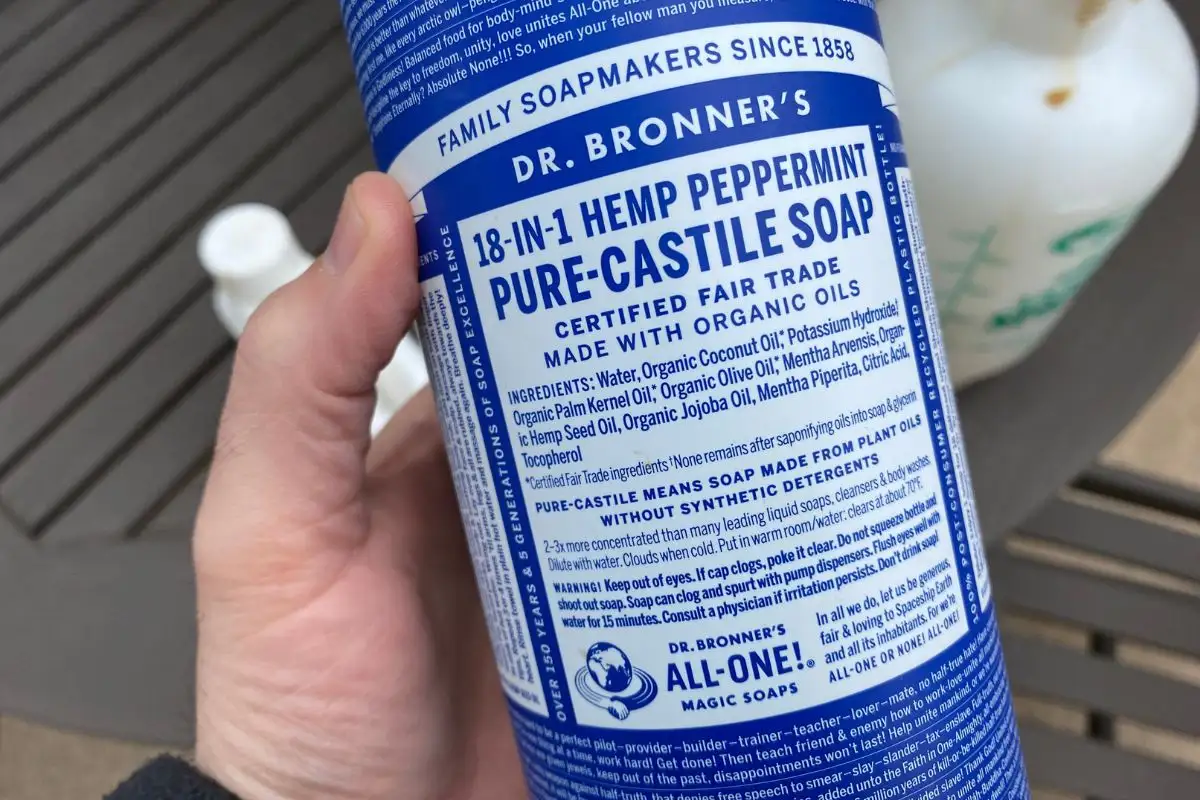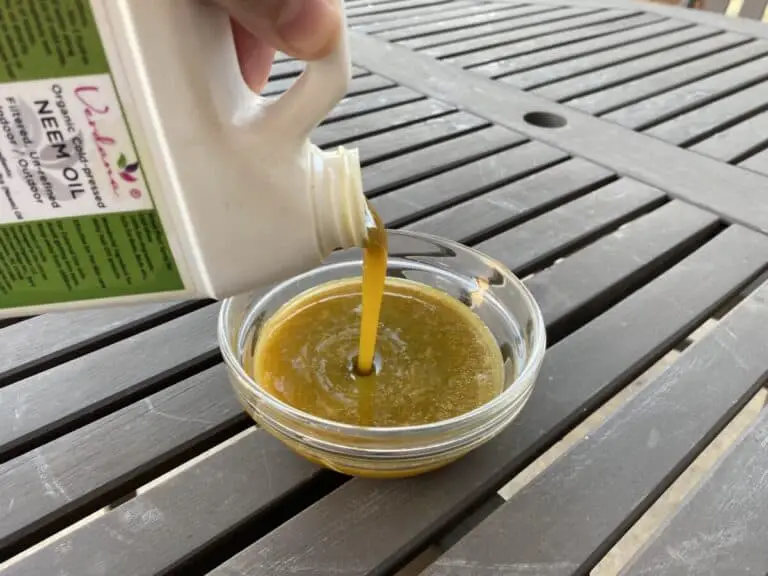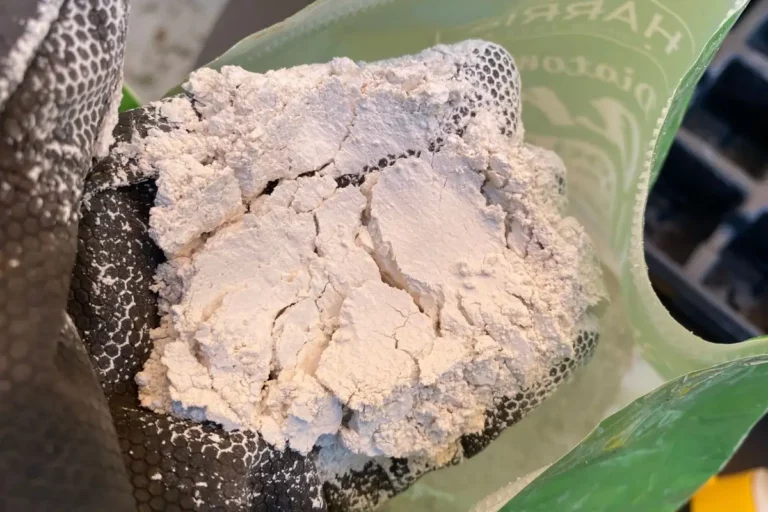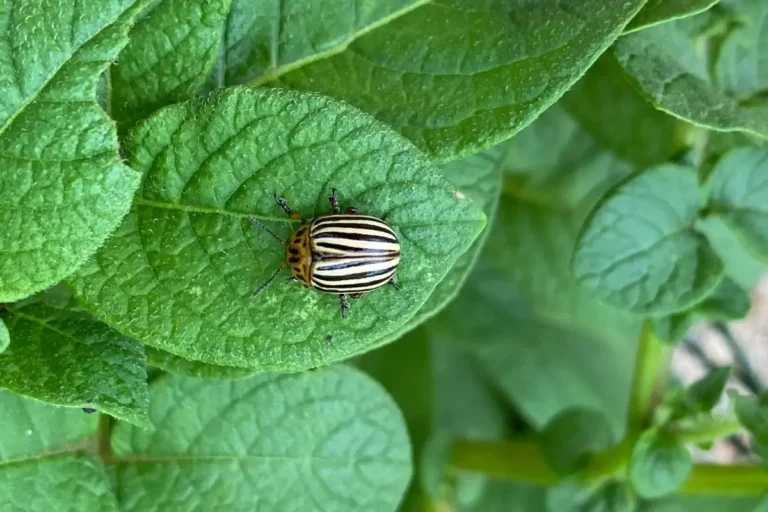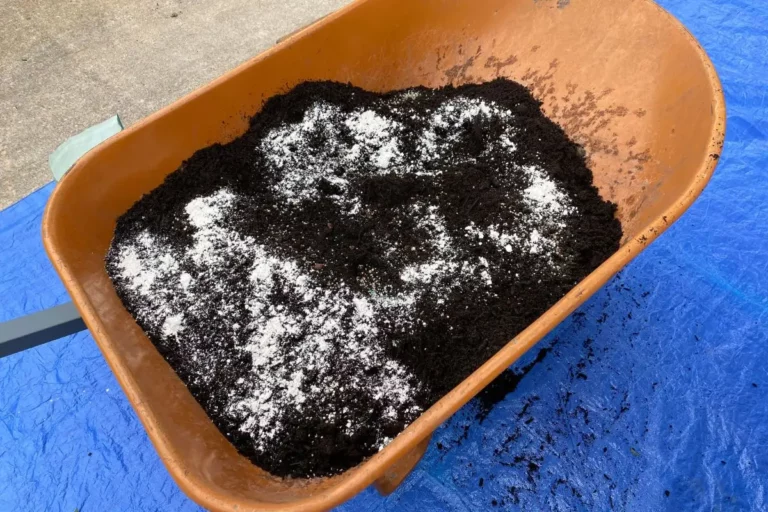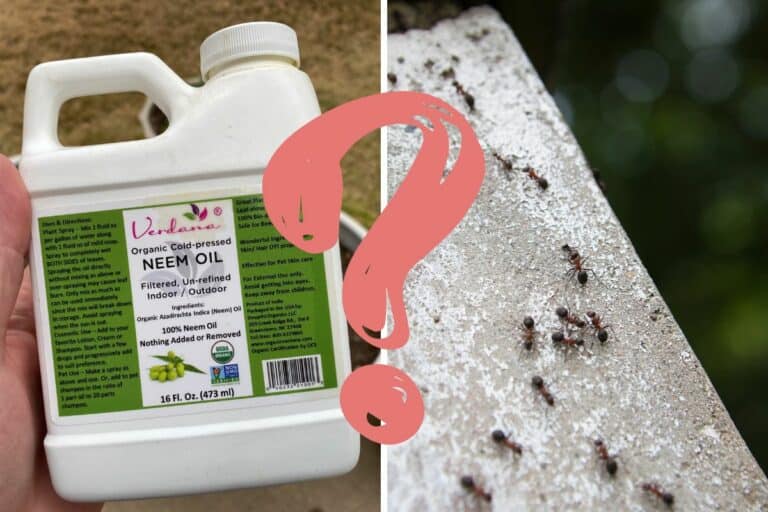Soapy Water Spray: A DIY Recipe for Simple Pest Control
Over the years, and after much trial and error, I’ve developed a simple DIY solution that’s been highly effective at stopping pests from destroying my plants: an easy-to-make soapy water spray + a highly effective treatment schedule.
To make my homemade soapy water spray, fill a 2-gallon garden sprayer with water, then add 5 tablespoons of castile soap per gallon and mix well. If applied correctly and at regular intervals, this eco-friendly solution will kill off soft-bodied pests and control infestations without harming plants.
But why does soapy water work so well against garden pests?
The secret lies in the soap, which effectively coats the insect, damages its protective wax, and disrupts its cellular membranes, causing suffocation and dehydration.
This method, while lethal for pests, is gentle on plants, making it an ideal solution for your garden.
In this article, I’ll explain my soapy water spray recipe in more detail, discuss the products I’ve used in my backyard for the past few years, and explain my treatment schedule and why it works so well.
Because I’ll be sharing some affiliate links below–which means I’ll make a small commission at no extra cost to you if you purchase anything–I’m super picky about the products I recommend to my readers. Check out my product disclosure page to learn more.
These are the questions I’ll answer in this article:
- How Do You Make a Soapy Water Spray for Plants?
- How and When Should I Spray My Plants with Soapy Water?
- Is Dawn Dish Soap Okay for Plants?
- Does Soapy Water Keep Bugs Off Plants?
If you’ve ever struggled with aphids, spider mites, thrips, or other soft-bodied insects, keep reading to learn all you need to know to start fighting off these pesky invaders.
How Do You Make a Soapy Water Spray for Plants?
If you’ve never made a soapy water spray before, don’t worry. In this article, I’ll give you step-by-step instructions and explain why, when, and how to do so effectively.
When it comes to bad garden bugs, a well-made soapy water spray is particularly good at killing off softer-bodied insects, such as:
- Aphids
- Beetles (larvae and pupae only)
- Mealybugs
- Scale insects
- Spider mites
- Thrips
- Whiteflies
But have you ever wondered why soapy water sprays work well on these soft-bodied insects?
Long story short: They disintegrate bugs’ protective waxes, disrupt the workings of their cellular membranes, and cause dehydration and death.
Here are some good research articles in case you’d like to read more about the specifics:
- “Insect Control: Soaps and Detergents,” Colorado State University
- “How Soaps and Oils Work to Eliminate Pests,” The Florida Times-Union
- “Soap Sprays as Insecticides,” University of California
- “Insecticidal Soaps for Garden Pest Control,” Clemson University
When it comes to making homemade, DIY soapy water sprays, I know lots of people who recommend reaching for the nearest dish soap, but I’m not a fan of this method.
Dish soaps contain grease-fighting chemicals and fragrances, and there’s no reason to spray anything like that in your garden. Those soaps won’t necessarily damage your plants, but they’re certainly not doing you any favors either.
Generally speaking, I’ve found that castile soaps and insecticidal soaps are more plant-friendly and work just as well as anything you’ll find in the kitchen.
My all-time favorite product is Dr. Bronner’s Peppermint Castile Soap. Not only is it certified organic and biodegradable, but its peppermint fragrance adds an extra layer of deterrence against pests who happen to dislike peppermint and other such smells.
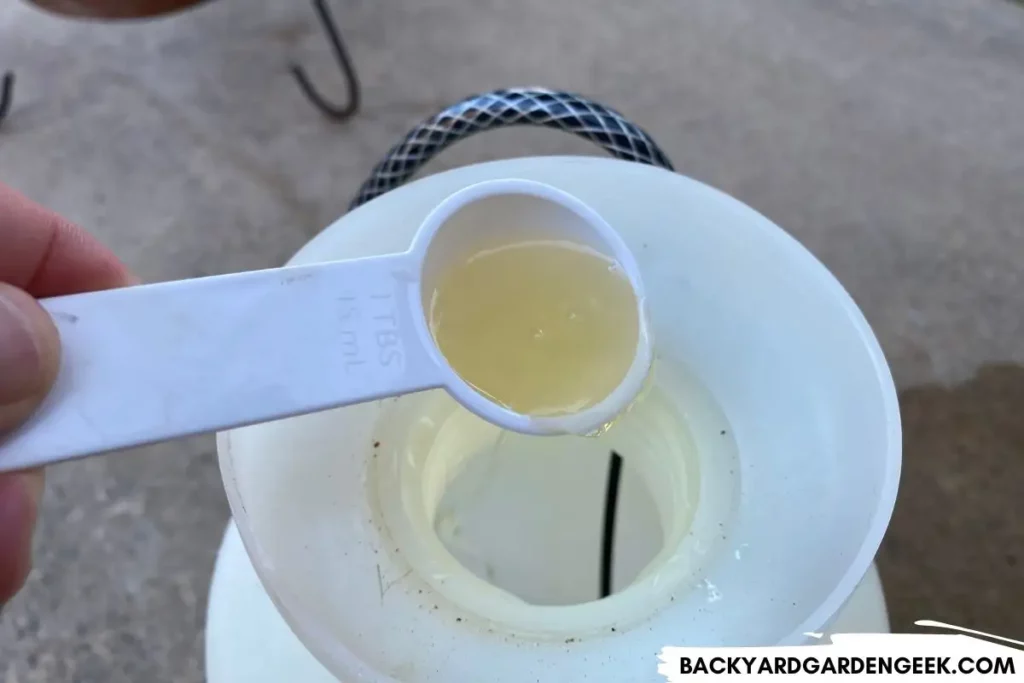
My recipe is as simple as it gets. All you need to do is mix 2 ingredients:
- 1 gallon of water (4 quarts if you prefer metric measurements)
- 5 tablespoons of Dr. Bronner’s Peppermint Castile Soap (around 74 milliliters)
In case you’ve never done this before, here’s an easy step-by-step guide to preparing and using your soapy water spray. This is exactly what I do when prepping soapy water for use in my backyard:
- Purchase a 2-gallon garden sprayer. Larger sprayers save time and make future applications easier since, unlike neem oil sprays, the soapy water can be stored for later use.
- Fill the sprayer with water first, preferably using a garden hose. Adding your soap before the water can lead to a frothy mess.
- Add 10 tablespoons of Dr. Bronner’s Peppermint Castile Soap to the 2-gallon sprayer (or 5 tablespoons if you’re only adding 1 gallon of water). I’d suggest getting a cheap set of measuring spoons exclusively for your gardening needs, especially if you ever make stronger insecticidal sprays.
- Secure the lid on your sprayer, grab it with both hands, and tip it from side to side, allowing the soap and water to mix evenly. When filled with water, 2-gallon sprayers can be a bit heavy, so if you’ve got mobility issues, try mixing 1 gallon first to make sure you can carry it easily.
- Before spraying, examine your plants for beneficial insects such as ladybugs and lacewing. You don’t want to harm these helpful creatures if you can avoid it (although sometimes you can’t…more on that later).
- Timing is crucial. Spray your plants with soapy water in the late afternoon or early evening, preferably around sunset. This reduces the chances of damaging leaves during the daytime heat or harming helpful pollinators.
- For the actual spraying process, opt for the garden sprayer’s “fan” or “mist” settings. The “fan” setting is ideal for a stronger, more direct spray, while the “mist” setting provides wider coverage with a thinner layer of the mixture. I typically use the “fan” settings when spraying aphids since I want to dislodge as many as I can, and I’ll use the “mist” settings against spider mites since I want the best coverage possible.
- Start by spraying the undersides of the plant foliage, moving from the bottom of the plant to the top. After that, target the tops of the foliage, working from the top of the plant to the bottom. This ensures that you’ll coat as many garden pests as possible with your soapy water spray.
- Depending on the severity of your infestation, you’ll need to repeat applications every day (for heavier infestations) or every two days (for milder ones) until you see no more bugs since there’s no way you’ll get all of them the first time. Again, more on that below.
For an added punch against tough-to-manage infestations, consider adding neem oil to your treatment schedule once per week.
Derived from the seeds of the neem tree, this organic compound works as a fantastic insect repellent, disrupting the life cycle of insects at all stages (egg, larvae, and adult).
I don’t recommend adding neem oil to the larger, 2-gallon sprayer since neem oil can’t be stored. You’ve got to use it within 6-8 hours (preferably as soon as possible) or else it’ll break down and become useless. You’ll end up wasting neem oil if you add it to a larger sprayer (unless you’ve got a huge garden and a massive bug infestation).
Do this instead: Purchase a 1/2 gallon water sprayer—or something that’s around 1/2 gallon—and make this your dedicated neem oil sprayer:
- Fill it with water.
- Add the equivalent of 2 tablespoons of cold-pressed neem oil per gallon. I’ve used the brands Verdana and Neem Bliss, and both have worked well for me.
- Add the equivalent of 1 tablespoon of castile liquid soap per gallon. This is a necessary emulsifier that’ll allow the water and neem oil to mix.
- Spray your plants using the directions provided above.

If you’d like to learn more about how to use neem oil in your garden and store it properly for future use, check out these articles I’ve written about the subject:
- How Can I Make Neem Oil More Effective? My 10-Step Process
- How Long Does It Take for Neem Oil to Kill Bugs?
- How to Wash Neem Oil Off Plants: 3 Steps + Things to Consider
- What Bugs Does Neem Oil Repel and Get Rid Of?
- Why Do Insects Hate Neem Oil? 12 Secrets to Its Success
Long story short, taking a proactive approach with your soapy water and neem oil sprays will help fend off pests before they establish themselves in your garden and among your plants.
The sooner you recognize and address your infestation, the better off you’ll be!
How and When Should I Spray My Plants with Soapy Water?
As I noted above, I’ve found the ideal time to apply soapy water spray is at sunset since the cooling temperatures and waning sunlight create the perfect conditions for treatment.
The plants aren’t under harsh, direct sunlight, and the slightly dimmer light still allows you to see what you’re doing. More importantly, the soapy water has ample time to dry before the sun returns in full force the next day.
Applying soapy water in the morning might seem logical—and I’ve seen plenty of people online who advocate doing so—but I think it’s a bit risky.
I’ve learned this the hard way. A few years back, my plants seemed to suffer during the hot summer months since the soapy water wasn’t fully dry when the sun was at its strongest. I even burned several plants one day when using a neem oil spray in the early morning.
Simply put, if you apply your sprays when the sun is setting, you’ll never have to worry about leaf burn or plant damage.

As I’ve already suggested, a single application of soapy water is almost never enough to stop an infestation, especially if that infestation is already well-established among your plants.
For example, tomatoes have a defense mechanism that goes into high gear when bugs begin attacking. The tomato plant will curl its leaves as it attempts to protect itself; unfortunately, those leaf curls will also end up protecting some of the aphids and spider mites from your soapy water sprays.
Soapy water sprays only work when they coat insects, which is why back-to-back applications are essential.
Below is a 2-week treatment schedule, derived from my own experience fighting off pests in my garden.
Days 1-7 cater to slight infestations, while Days 8-14 tackle more serious ones.
You’ll rarely need a full 14 days of treatment, but as a novice gardener, I once grappled with a massive spider mite infestation that took daily soapy water sprays (plus a weekly addition of neem oil) for 2 weeks to put a stop to.
You can read more about that experience in these articles:
- Are Spider Mites Spiders? How to Identify These Garden Pests
- Can Plants Recover from Spider Mites? What You Need to Know
- Using Neem Oil to Kill Spider Mites: A Complete Guide
- What Do Spider Mites Look Like on Plants?
Briefly put, here’s what that schedule looked like. Please modify as needed based on the severity of the infestation you’re fighting against in your own garden.
Day 1 to Day 7 (Mild to Moderate Infestations)
- Spray your plants in the early evening, covering the tops and undersides of all leaves.
- Repeat daily until you notice no more bug activity among your plants. You might only need to spray 2-3 times, but some infestations will require 4-7 days of soapy water treatments.
- For spider mites, I recommend a few extra days of treatment even after you think they’re gone. They’re so hard to spot, and you don’t want to miss any and let them get reestablished among your plants.
Day 8 to Day 14 (Extreme Infestations)
- Continue with the daily evening sprays as above.
- At some point during Week 1 and Week 2, put aside the soapy water spray and spray your plants with a neem oil spray for added protection.
- Continue this for the full 14 days or until the infestation is gone.
You probably don’t need 14 full days (that seems like a lot, right?), so just gauge where things stand in your garden and modify this treatment plan accordingly.
Over the past 5 years, I’ve used this plan to keep aphids, mealybugs, spider mites, thrips, and whiteflies from taking over my plants.
The combination of regular, thorough applications and the addition of neem oil is just too much for those soft-bodied pests to handle, and my plants don’t mind the sprays one bit since I always do so at sunset, never in the morning or during the day.
Is Dawn Dish Soap Okay for Plants?
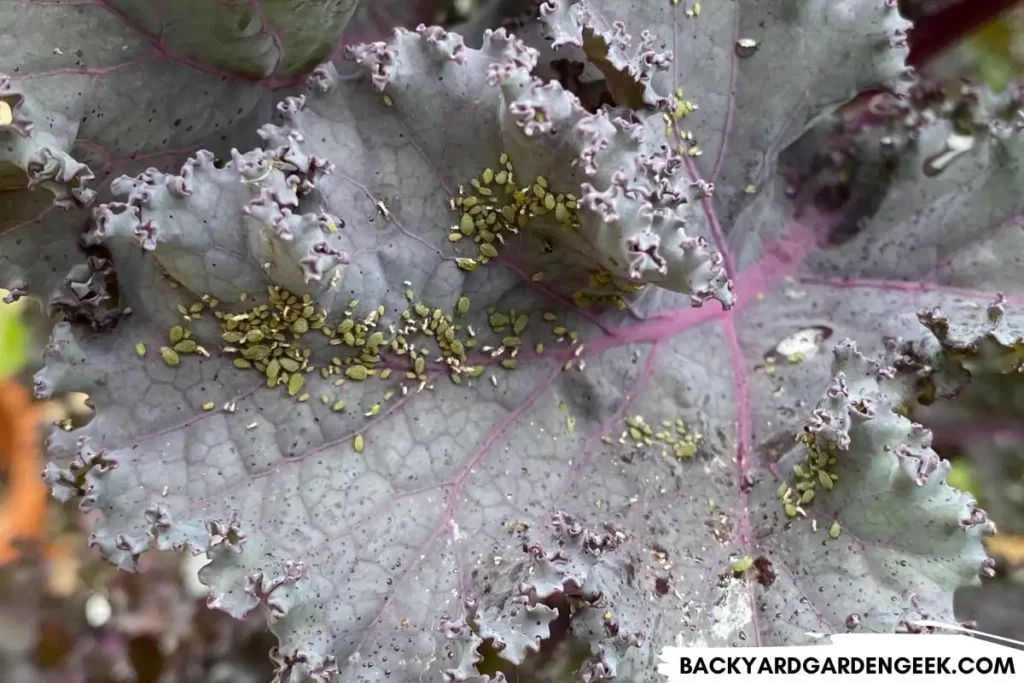
As I’ve noted above, not all soaps are created equal.
Some are much more effective and safer for your plants, like the insecticidal soaps sold by Safer Brand or the castile soaps sold under the Dr. Bronner’s brand.
(Dr. Bronner’s soaps are, by far, my favorites when it comes to soapy water sprays!)
Insecticidal soaps, as their name suggests, are specifically designed for pest control in gardens. They’re made from plant-derived fatty acids, making them safe for your plants but lethal for a wide range of common garden pests.
I’ve used a couple of Safer Brand products, and I’ve liked the results. These ready-to-use products work on contact, penetrating the outer shells of pests and causing dehydration and death.
However, I tend to prefer a more DIY approach, especially since it’s often much cheaper to make your own homemade soapy sprays.
For that, castile soap shines. I’ve used Dr. Bronner’s castile soap for years, and I’ve never had a problem.
The advantage of using a castile soap like Dr. Bronner’s is the control it gives you over the concentration. You can adjust the soap-to-water ratio based on the severity of your infestation.
Think my recipe above is too strong? No problem. Just add less soap and see whether or not that does the trick. I always recommend experimenting, so do what works best for you!
While Dawn dish soap is a popular choice among some gardeners due to its convenience, I don’t particularly like using it in my garden (although it works great in the kitchen!).
Sure, it’ll kill insects, but it’s not designed for plants since it contains degreasers and fragrances.
Why do you need that? Dr. Bronner’s soaps are a little bit more expensive than Dawn, but they’re free of unnecessary chemicals.
If you’re looking for an easy, plant-safe option, use a castile soap like Dr. Bronner’s instead. It’s effective, safe for your plants, and a huge step up from regular dish soap.
Does Soapy Water Keep Bugs Off Plants?
When it comes to garden pests, soapy water is a remedy, not a deterrent.
Its effectiveness kicks in once you’ve discovered bugs in your garden, but it won’t prevent them from showing up in the first place.
The mechanism is straightforward: Soapy water, when sprayed onto insects, suffocates and dehydrates them. But once it dries, it leaves no trace behind and won’t in any way deter future pests.
For preventive pest management—especially against armyworms, beetles, leaf-footed bugs, squash bugs, stink bugs, and larger garden pests—solutions like diatomaceous earth (DE) offer better results.
This naturally occurring, powder-like substance can deter pests due to its abrasive qualities. It works by piercing the exoskeletons of insects, causing them to dehydrate and die.
But here’s the catch: DE doesn’t discriminate between beneficial and harmful bugs. It’ll kill any bug that has an exoskeleton.
Spraying your entire garden with it might disrupt the balance of your garden’s ecosystem, harming helpful insects like bees and butterflies, ladybugs, and lacewings.
How do you strike the right balance between proactive pest prevention and ensuring the well-being of your garden’s beneficial insects?
Well, it’s something of a balance.
On the one hand, if you keep your plants evenly watered and well-fertilized, they’ll be more apt to naturally fight off infestations.
On the other hand, if you learn how to identify garden pests and keep a close eye on your plants each week, you’ll be able to proactively identify infestations and work to stop them early on (when it’s easier to do so).

The strength of soapy water lies in its simplicity and ease of preparation since anyone can whip up a solution in under 5 minutes (assuming you’ve got the right tools on hand).
My favorite part about soapy water sprays is the fact that you can store them in your garage or shed afterward for future use. The next time the bugs show up, just shake the bottle well and spray your plants all over again.
Simply put, soapy water won’t stop pests from visiting your garden, but it’s an effective, easy-to-prepare solution once they’ve arrived.
Give it a try and let me know how it goes!
More Pest Management Information
If you’d like to learn more about how I keep aphids, spider mites, and other pests from destroying my plants, take a look at these articles:
- 11 Proven Ways to Stop, Kill, and Get Rid of Spider Mites
- 12 Reasons Why Aphids Keep Coming Back + 3 Simple Fixes
- 27 Plants that Resist, Repel, and Trap Spider Mites
- Use Neem Oil to Stop Armyworms: Scientists Explain Why
- Using Neem Oil to Kill Pill Bugs: Should You Try It?
- Where Do Aphids Come From? Things to Consider
- Will Aphids Go Away on Their Own? 9 Things to Know
- Will Neem Oil Kill or Repel Ants? All You Need to Know
